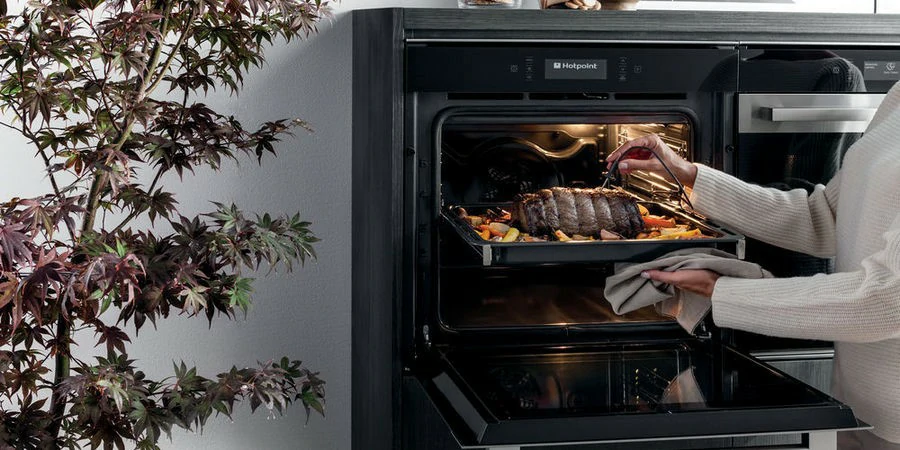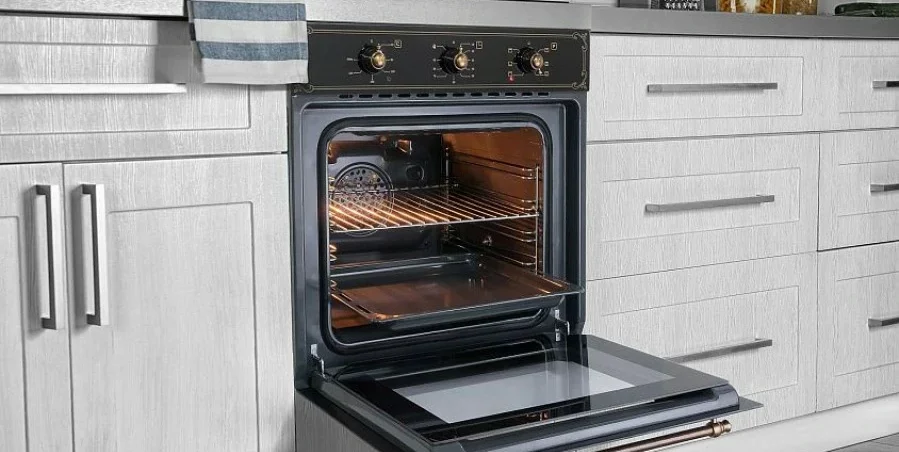We’ve all been there – ready to whip up something delicious in our trusty gas oven, only to find it’s not heating up like it should. But don’t worry, because in this beginner’s guide, we’ll show you how to fix your gas oven when it’s not heating properly.
Check the Gas Stove Ignition
The first thing to investigate is the gas stove ignition. It plays a big role in getting your oven to heat up. Sometimes, the ignition might not be sparking properly, causing the gas not to ignite. Here’s what you can do:
- Safety First: Before anything else, make sure your oven is turned off and disconnected from the power supply.
- Inspect the Igniter: The igniter is usually located at the back of the oven. It should glow red-hot when you turn on the oven. If it doesn’t, it might be faulty and needs replacing.
- Clean the Igniter: If the igniter is covered in grime or grease, it might not function correctly. Gently clean it with a soft cloth and some soapy water. Avoid using harsh chemicals.
Inspect Gas Connections
Gas connections are another potential culprit for a gas oven not heating up. A loose or faulty connection can prevent gas from reaching the oven’s burner. Here’s how to address this:
- Turn Off Gas Supply: Safety always comes first. Shut off the gas supply to your oven before you begin any inspection.
- Check for Leaks: Use a mixture of soap and water to check for gas leaks along the connections. If you see bubbles forming, there’s a leak, and you should call a professional technician to fix it.
- Tighten Connections: If you find any loose connections, tighten them using a wrench. Be gentle to avoid damaging the fittings.

Clean the Gas Ignitor
A dirty gas ignitor can also lead to heating issues in your oven. Let’s clean it up:
- Safety First: Turn off the oven and disconnect it from the power source.
- Access the Ignitor: Remove the oven floor or bottom panel to access the ignitor. It’s usually near the burner.
- Gentle Cleaning: Gently clean the ignitor with a soft brush or cloth. Be careful not to damage it, as it’s a sensitive component.
Test the Oven Thermostat
The thermostat controls the temperature of your oven. If it’s not functioning properly, your oven might not heat up. Here’s how to test it:
- Preheat the Oven: Turn on your oven and let it preheat for about 15 minutes.
- Use a Thermometer: Place it inside the oven. After the preheating time, check if the temperature matches the one you set. If it’s way off, your thermostat might be faulty.
Position the Temperature Sensor
Some gas ovens have a temperature sensor that checks the oven’s internal temperature and sends signals to the thermostat. If this sensor is not positioned correctly, it can give inaccurate readings:
- Find the Sensor: Look for the temperature sensor, usually at the back of the oven. It’s a small rod-like device.
- Reposition if Necessary: Ensure the sensor is properly positioned, not touching the oven walls or any racks.
Troubleshooting Self-Cleaning
Self-cleaning is a convenient feature offered by many modern gas ovens. It’s designed to be able to burn off food residues and spills by using high temperatures. However, issues with the self-cleaning function can sometimes lead to problems with the oven’s regular heating. Let’s delve deeper into troubleshooting self-cleaning to ensure your gas oven functions optimally:
Understanding the Self-Cleaning Cycle.
The self-cleaning cycle is a process during which the oven’s temperature is elevated to a much higher level than typical cooking temperatures. This extreme heat cleans all food particles, grease, and spills inside the oven. While the self-cleaning cycle is on, it can make additional stress on various components, especially if the oven is already experiencing issues.
Unresponsive Controls: If the oven’s control panel doesn’t respond during the self-cleaning cycle, it might be due to an electrical issue. What could be done:
- Reset the Oven: Turn off the oven’s power for a few minutes and then turn it back on. This can sometimes reset the control panel and resolve minor glitches.
- Check for Error Codes: If your oven displays an error code, consult the user manual to decipher its meaning. Error codes can tell you problem are you facing with.
Oven Doesn’t Reach High Temperatures: If the oven isn’t reaching the necessary high temperatures for self-cleaning, it could be due to a faulty thermostat or temperature sensor. Here’s what to consider:
- Thermostat Testing: If your oven has been struggling with temperature accuracy, the thermostat might be at fault. Perform the thermostat testing steps mentioned earlier in this guide.
- Temperature Sensor Check: Ensure that the temperature sensor is properly positioned and not obstructed. Reposition it if necessary.
Strong Odors and Smoke: It’s normal to experience strong odors and even a bit of smoke during the self-cleaning cycle due to the burning of food residues. However, excessive smoke or unbearable odors could indicate an issue:
- Ventilation: Ensure that the kitchen is well-ventilated by opening windows and turning on the exhaust fan. Adequate ventilation helps dissipate the strong odors and prevents the accumulation of smoke.
- Clean the Oven Before Self-Cleaning: Large food particles or spills can create excessive smoke during self-cleaning. It’s a good practice to manually remove any visible debris from the oven before starting the self-cleaning cycle.
Uneven Cleaning: If you notice that some parts of the oven are not as clean as others after the self-cleaning cycle, it could be due to uneven distribution of heat:
- Positioning of Racks: Make sure the oven racks are positioned correctly during self-cleaning. Some ovens require specific rack placement for optimal heat distribution.
- Stain Removal: For stubborn stains that don’t come off during self-cleaning, consider using a non-abrasive cleaner and a soft cloth after the cycle is complete. Avoid using harsh chemicals that can damage the oven’s interior.

Precautions During Self-Cleaning
If you facing problems due the self-cleaning function, it’s important to keep safety in mind:
- Always follow the instructions for using the self-cleaning feature.
- Remove any items from the oven that are not oven-safe, such as plastic utensils or aluminum foil.
- Do not open the oven door during the self-cleaning cycle, as the high temperatures can be dangerous.
- If the smoke becomes excessive or if you’re concerned about fire safety, turn off the self-cleaning cycle and allow the oven to cool down.
- Your gas oven not heating up can be frustrating, but with a little troubleshooting, you can often pinpoint the issue and resolve it on your own. From checking the gas ignition to cleaning the ignitor and ensuring proper connections, these steps cover the most common problems. If you find that the issue persists after trying these solutions, it’s best to call in a professional technician.
Remember, safety first when dealing with gas appliances. Always disconnect the oven from the power source and shut off the gas supply before attempting any repairs. With these steps, you’ll soon have your trusty oven back to baking and roasting like a pro.